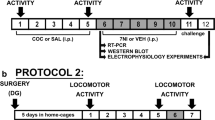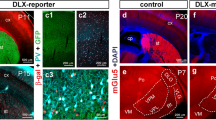Abstract
In brain, nitric oxide (NO) is considered as a retrograde messenger involved in synaptic plasticity. The present study was undertaken to investigate whether mice lacking the neuronal nitric oxide synthase (nNOS) gene are protected from cocaine-induced behavioral sensitization. Mice were administered, IP, either saline or cocaine (15 mg/kg) for 5 days. Sensitization was determined as an increase in cocaine-induced locomotor activity on day 5 compared with day 1 and an amplified response of cocaine-experienced mice to a challenge cocaine injection given after a 10-day drug free period (e.g., on day 15). To investigate the development of a context-dependent locomotion (conditioning), the responses of cocaine- and saline-experienced mice to a saline injection were determined on day 17. Male homozygote nNOS(–/–) mice were sensitive to the acute effect of cocaine (15 mg/kg) on day 1; however, they developed neither a sensitized response to cocaine (on day 5 and 15) nor a conditioned locomotion. Female homozygote nNOS(–/–) mice neither were responsive to 15 mg/kg cocaine on day 1, 5 and 15, nor did they develop a conditioned locomotion. In contrast, the same cocaine regimen delivered to male and female heterozygote nNOS(+/–) mice, and wild type mice (B6 J/sv129, C57BL/6 and sv129) resulted in sensitization to cocaine-induced locomotor activity and context-dependent locomotion. Investigation of [3H]cocaine disposition in the striatum and frontal cortex of the mice revealed neither gender nor strain differences in the drug disposition. Also, no major difference in striatal dopaminergic markers between homozygote nNOS(–/–) and wild type mice was observed. The most significant distinction, however, was the finding that nNOS(–/–) mice are completely deficient in striatal nNOS binding sites. Taken together, our results suggest that the resistance of homozygote nNOS(–/–) mice to cocaine-induced behavioral sensitization is primarily due to the deletion of the nNOS gene. Considering the role of NO in synaptic plasticity, it is conceivable that reduced brain NOS activity blunts the processes that underlie the development of sensitization to cocaine.
Similar content being viewed by others
Author information
Authors and Affiliations
Additional information
Received: 18 March 1998 / Final version: 9 May 1998
Rights and permissions
About this article
Cite this article
Itzhak, Y., Ali, S., Martin, J. et al. Resistance of neuronal nitric oxide synthase-deficient mice to cocaine-induced locomotor sensitization. Psychopharmacology 140, 378–386 (1998). https://doi.org/10.1007/s002130050779
Issue Date:
DOI: https://doi.org/10.1007/s002130050779




